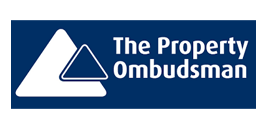
Are you ready to put your moving plans into action? Our handy guide will take you through each step of the process, from working out your budget to making an offer, exchanging contracts and moving in. Take the first step towards your next move, today. Here’s how to get started…
Preparing to sell your home
If you’re not a first-time buyer, selling your home before you start searching for your next property will put you in a strong position as a buyer. Find out how you can become a ‘power-buyer’.
You can read our step-by-step guide to selling your home here.
Saving for a deposit
When you’re saving for a deposit, it’s really helpful to plan your monthly spending budget, and aim to save a regular sum each month.
Tax-efficient savings accounts like an Individual Savings Accounts (ISA) or a Lifetime Individual Savings Account (LISA) can maximise your returns – you can get substantial bonuses if you’re a first-time buyer. You must be 18 or over, but under 40 to open a Lifetime ISA.
Getting mortgage ready
You’ll want your credit report to be in the best possible shape before a lender looks at it. Credit reports provide an insight into your payment behaviour – and lenders use them as part of their decision-making process. It’s a good idea to check your credit record, just in case there are any errors which could affect your score. Checking your own rating is viewed as a soft check and won’t impact your score.
You’ll also need to collect tons of paperwork to back up your mortgage application. You’re going to need a passport, at least three months’ worth of bank statements and pay slips (or two years’ worth of audited accounts if you are self-employed). Most lenders also want you to have at least one utility bill in your name at your current address, and you should be on the Electoral Roll.
READ MORE: Sorting out your finances
Work out your budget
Buying a property is a big step involving a substantial long-term financial commitment, so really consider what you can afford. You’ll need to take into account the assets you have – like savings – as well as the money that’s coming in and going out.
READ MORE: Working out what you can afford
Find out how much you can borrow with a mortgage
Every lender has different ways of calculating how much they’ll lend to you, or even whether they’ll lend to you at all. Your income, the size of your deposit, your regular expenditure, and your credit rating will be taken into consideration.
You can start by getting a rough idea of how much you could borrow by using our mortgage calculator.
Apply for a Mortgage in Principle
A Mortgage in Principle is the next step that can make a big difference when it comes to searching, viewing, and offering on a home.
A Mortgage in Principle is also known as an Agreement in Principle, Decision in Principle, Mortgage Agreement in Principle, or a Mortgage Promise. A Mortgage in Principle, or MIP for short, is a personalised document confirming an amount of money which a lender believes they would be able to lend you, based on the information you’ve shared at this stage. And even though it isn’t a legal requirement, increasingly estate agents will ask that you have one.
A Mortgage in Principle is specific to you and, together with your deposit, it can give you an indication of the property price range you can search within. So you can search for your new home with more confidence. You can usually get a MIP within 24 hours, and it’s normally valid for up to 90 days, but different lenders criteria and rules will differ.
READ MORE: Getting a Mortgage in Principle
Research where you want to live
Take some time to research and get to know your chosen area. If you can, make sure you walk around the neighbourhood so you can get a sense of what it’ll be like to live there. That way, you can also find out how long it will take you to get to the nearest station, supermarket, or to do the school run.
If you don’t think you can afford the home you want in your top choice postcodes, try looking a little further along the same train, Tube, or tram line. You could find a better value home in return for a slightly longer commute.
You can use our Draw a Search feature to set the area you’d be open to look at moving to, and if you expand your chosen area on the map, you’ll have even more properties to choose from.
Whether you’re comparing different locations, exploring a range of options within your budget, or managing your viewings, using Property Lists to organise your saved properties can make it easier to keep track of your top choices.
Start home-hunting
Ensuring you’re the first to find out about new properties, or even price reductions, is essential to landing your dream home. The easiest way to stay on top of what’s coming to market, in the areas you’re most interested in, is to set up property alerts.
It’s also worth visiting local estate agents in person to register your interest in the area. Agents will be more likely to remember you if you’ve met, and will bear you in mind when they get new instructions.
Draw up a list of important questions (how long is the property’s lease, have the owners found a place to move to yet, how long has it been on the market?) so you don’t forget to ask these things when you go and view properties.
Before deciding how much to offer, check how much homes in the area have recently sold for.
READ MORE: Getting the most out of viewings
Making an offer
Knowing your budget ceiling is crucial so decide your maximum limit from the start. When you’re ready to make an offer to the estate agent selling the home, it’s a good idea to also tell them a bit about you. For example, if you’re a chain-free first-time buyer with a Mortgage in Principle, make this clear so the owner of the home will know you’re ready to proceed.
READ MORE: Making an offer on a property
Arranging a mortgage
Now you’ll need to move fast – the seller will want to see progress so try to avoid any unnecessary delays in getting the surveys and other legal work done. Complete the mortgage lender’s application form and send them the documents they require – this will include proof of your ID, evidence of your earnings, proof of your address over the last few months and your bank statements, so have these ready.
READ MORE: Submitting your mortgage application
Lender’s valuation and surveys
The lender will arrange for a qualified surveyor to inspect the property you’re looking to buy and check its value. As well as make sure that it’s a property they’ll lend against.
READ MORE: What to expect from the lender’s valuation
Want more peace of mind when it comes to the condition of your property? There are three levels of survey – a basic condition report, a standard homebuyer’s report, the most popular option, or an in-depth building survey which is usually reserved for very run down or very unusual properties.
If a survey uncovers problems you may be able to negotiate a price cut to offset some or all of the cost of the work.
Hire a solicitor or conveyancer
Conveyancing is the process undertaken by the buyer’s and seller’s solicitors of transferring the legal ownership of property or land from one person to another. Once you’ve had your offer accepted, inform your solicitor so they can start studying the lease, ordering council searches, and drawing up contracts.
Exchanging contracts
Once the survey and searches have come through and your mortgage is approved you will be ready to exchange contracts and put down a non-refundable deposit. This will all be arranged by your solicitor.
Preparing to move
You’ll need to arrange to redirect your mail to your new home, inform your utility companies that you are leaving your old home, arrange home insurance, and set up your landline and broadband services.
You’ll also need to arrange for a removal company or van hire. A very thorough declutter at this stage will make life easier during and after the move!
Stamp duty tax is payable in England and Northern Ireland within two weeks of completing your sale. Your solicitor should handle the paperwork for you. You can work out how much you’ll need to pay by using our stamp duty calculator. There are also equivalent taxes payable in Scotland and Wales.
Completing the sale
There’s very little you can do on completion day other than drink endless cups of tea and anxiously await the call from your estate agent letting you know that the funds have gone through, and you can finally collect the keys to your new home. You’re then ready to move in!
Moving Day
Pack everything you’ll need for your first night or two, including bedding, and keep these bags apart from the rest of your stuff. That way you won’t have to waste time searching for a toothbrush lost somewhere in a mountain of boxes.
Label your other boxes with which room you want them to go in to try and keep things in some sort of order.
Book a supermarket delivery for the next day – and get unpacking.
To read the original article click here






